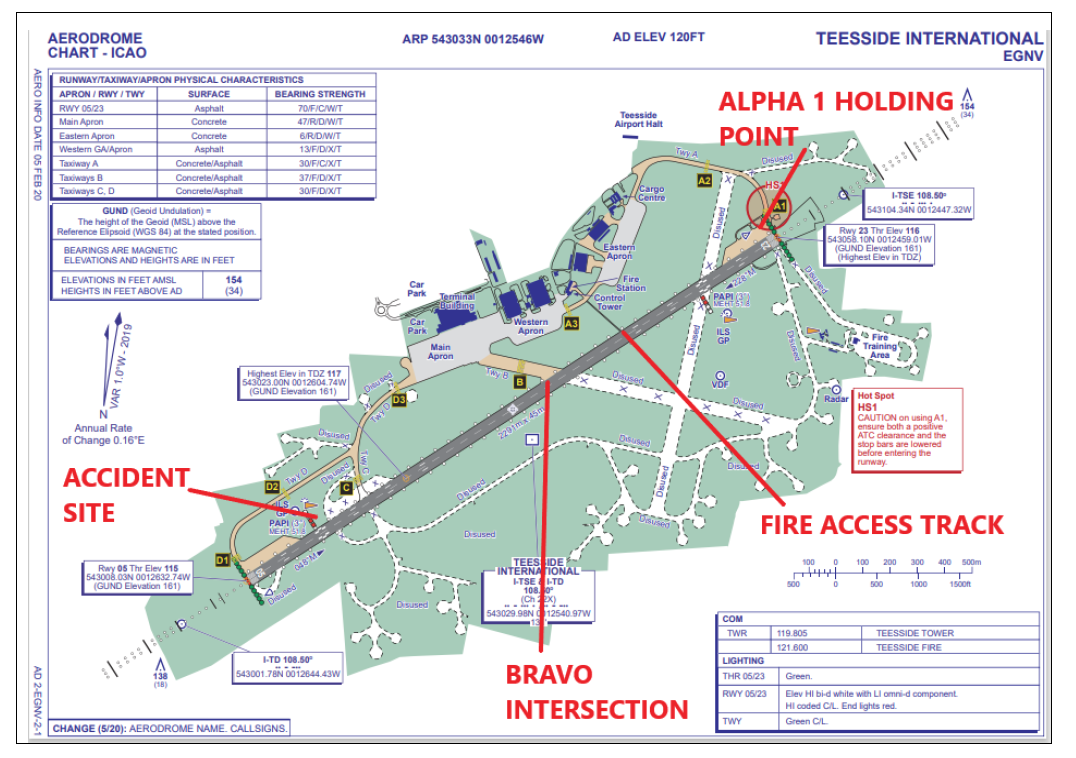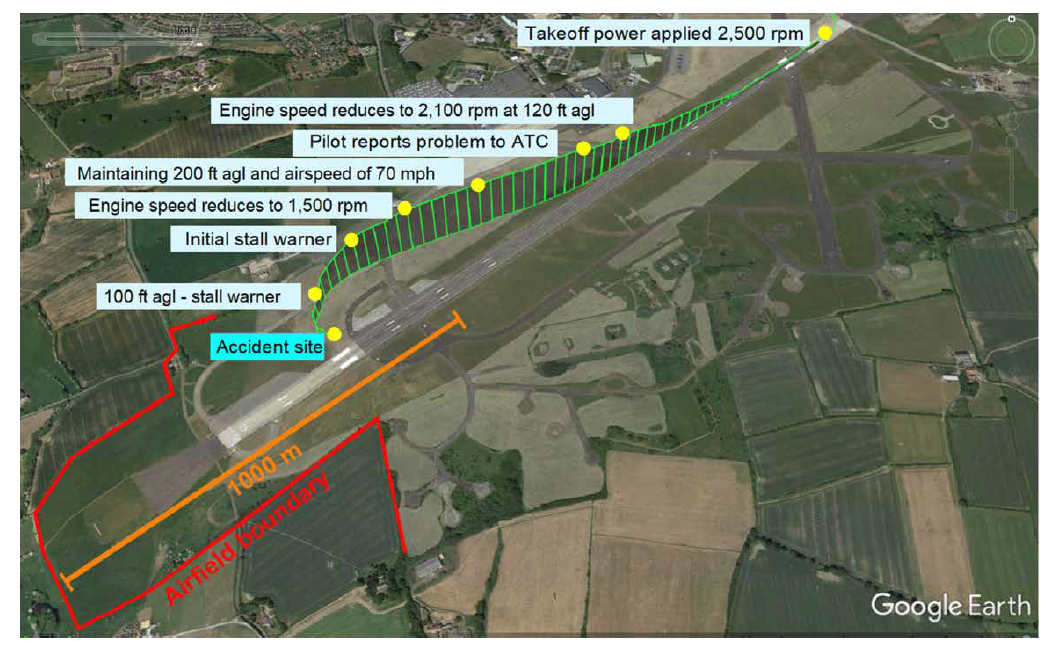


Investigation on the accident of a Grumman AA-5 aircraft in the year 2021 has prompted the Air Accidents Investigation Branch to release three safety recommendations related to the management of partial power loss situations.
On 25th September 2021, a Grumman AA-5 aircraft suffered a partial loss of engine power after takeoff. The pilot attempted a turnback but the aircraft stalled and struck the ground.
On 25th September , the pilot of the Grumman AA-5 aircraft (G-BBSA) had planned a local flight with two passengers . After Teesside ATC clearance for three occupants on a planned flight time of one hour with a fuel endurance of five hours (full fuel tanks), Pilot also informed ATC that the planned route was from Teesside to Middlesbrough and then route north to the River Tyne before returning to Teesside.
One passenger took seat in the front right seat and the second sat behind the pilot . The rear seat passenger recorded a video of the takeoff and short flight on a mobile phone. This recording was subsequently analysed , along with other sources, to assist in confirming the sequence of events.
On that day , The aircraft started up normally after the Pilot was cleared to taxi to the Alpha 1 Holding Point for Runway 23. ATC witnessed the aircraft stop at Alpha 1 to conduct engine run up checks.
Aircraft proceeded for takeoff and approximately 14 seconds after becoming airborne , pilot noticed a significant change in the engine note. At this point the aircraft was passing intersection Bravo at a height of approximately 120 ft agl.

Picture Courtesy : UK - AAIB
ATC noticed its track was drifting to the right of the centreline of Runway 23 but otherwise considered that the departure looked normal.
As the aircraft reached approximately 170 ft agl , the pilot contacted ATC to report that he had suffered a loss of engine power and requested for return back to land on Runway 05.
There was another aircraft at two miles on final approach to Runway 23 and ATC directed this aircraft to go around before clearing G-BBSA to land on any runway.
G-BBSA turned left towards Runway 05 and began to descend. During the turn, 57 seconds after becoming airborne, the aircraft audio stall warning began to sound.
At approximately 60 ft agl, the left bank angle suddenly increased, and the aircraft descended rapidly, striking the ground 67 seconds after becoming airborne. The aircraft was extensively damaged.
The Grumman AA-5 is an all-metal low-wing four seat light aircraft fitted with a 150 HP Lycoming O-320-E2G piston engine.
After months of recovery from injuries , at what the pilot recalled was around 400 ft agl he described the engine as losing all power and recalled lowering the pitch attitude to maintain speed.
There was a field ahead which, on previous flights, he had considered in the event of a forced landing. However, it contained animals, farm vehicles and people, so he considered it unsuitable.
The other terrain ahead was the River Tees and so, in the pilot’s opinion, a landing ahead was not viable. Believing he was outside the airfield boundary the pilot commenced a turn to return to the airport.
As it came into view, he realised he had insufficient height to reach the runway and chose a green area in which to land stating “It looked good enough to land.
Good area. I put it down there.” His recollection was of flaring the aircraft to control the touchdown and that the stall warner sounded just before touchdown.
A total loss of power is something for which pilots are regularly trained and for which there exists a simple set of checks and procedures. The training emphasises the limited time available and endeavours to make the pilot’s response second nature.
Following a total power loss, a forced landing is inevitable, whereas in the partial power case pilots are faced with a more complex decision of whether to continue the flight or to make an immediate forced landing. Training for partial loss of power is seldom conducted and not a requirement of the UK licencing syllabus.
In order to prepare for events such as partial power loss the booklet emphasises the importance of pre-flight planning and pilot self-briefing.
It also states that the following factors should be considered before every flight :
► The runway direction and the best direction of any turn
► the local wind strength and direction on a particular day
► terrain and obstacles
► decision points (taking into account aircraft height and performance) where different landing options will be taken, such as:
Three Safety Recommendations are made to address these topics.
The engine suffered a partial loss of power during takeoff due to a portion of the accelerator pump discharge tube having been released from the carburettor into the No 4 cylinder.
Following this partial loss of power at low altitude the pilot decided to turn back to land , although post-accident analysis of the circumstances shows there was a sufficiently clear area ahead in which to effect a landing.

Picture Courtesy : UK - AAIB
During the turn, at a low airspeed, the aircraft stalled and struck the ground. All three occupants sustained serious injuries in the impact.
Management of a partial power loss event is not covered in the PPL syllabus and there is limited information provided for pilots conducting renewal or revalidation of licences.
The CAA has agreed to discuss the airworthiness concerns relating to discharge tube release events with the FAA, who are the regulator of the engine’s Type Certificate holder.
Source : AAIB -27717 .
